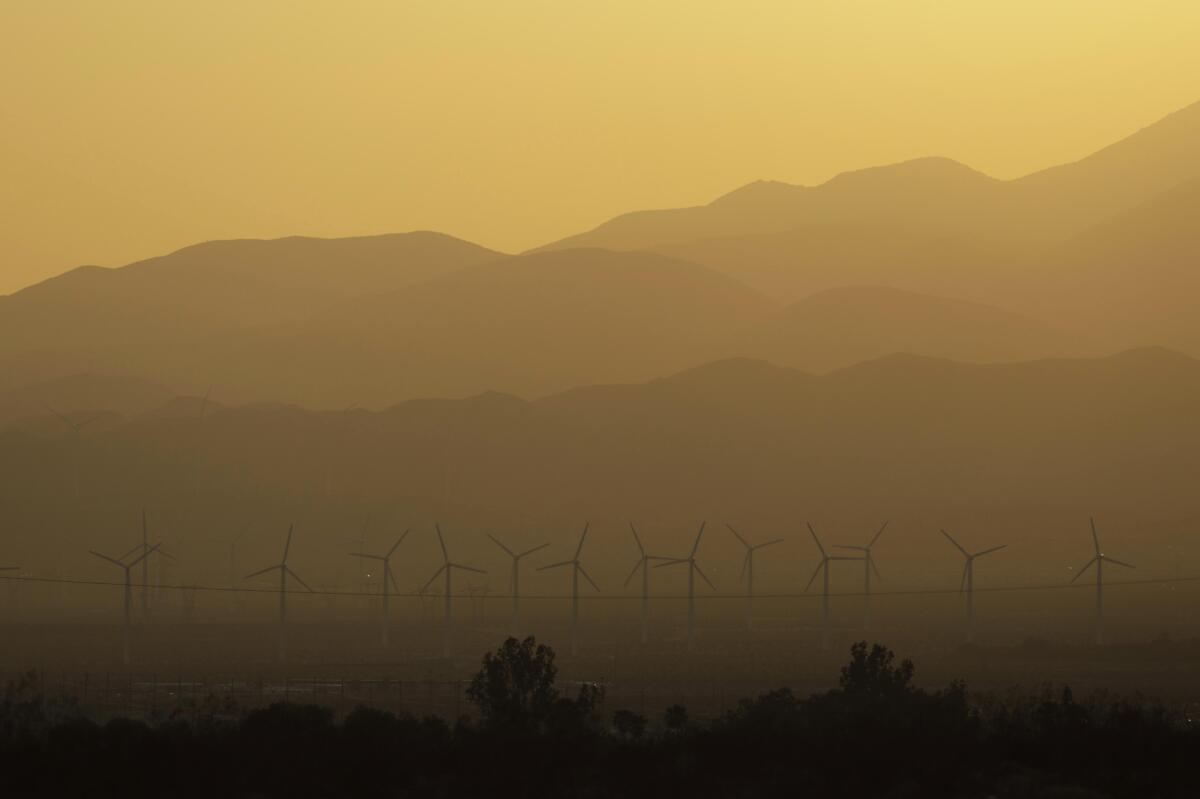Climate change fuels deadly heat waves. Ranking them like hurricanes could save lives

- Share via
Extreme heat is the deadliest climate-fueled hazard, killing more Americans than hurricanes, wildfires or floods. A lack of effective messaging is one reason the death toll is so high; many people fail to recognize how life-threatening heat waves are before it’s too late.
But there is no system of escalating warnings to communicate the danger of an impending heat wave as there is for hurricanes, fire risk and air quality. That’s increasingly hazardous as climate change makes these extreme heat events more frequent, severe and long-lasting.
The lack of such a warning system is one shortcoming identified in a Times investigation last year, which found that California chronically undercounts the number of people dying from extreme heat and has failed to address the growing threat of heat-related death and illness.
Lawmakers now have a chance to do better. State Assemblymembers Luz Rivas (D-North Hollywood) and Eduardo Garcia (D-Coachella) have introduced legislation that would make California the first state in the nation to establish a ranking system for heat waves and provide early warnings.
The bill, AB 2238, which is sponsored by State Insurance Commissioner Ricardo Lara, would require state officials to create and put a heat wave ranking system in place by Jan. 1, 2024. The rankings would be used to broadcast advanced warnings to affected communities, with each category triggering specific responses designed to help save lives. Those measures have yet to be determined, but could include directions to limit outdoor activity, seek shelter in an air-conditioned place like a library, community center or shopping mall or for local authorities to dispatch urban search-and-rescue teams to check on seniors and other vulnerable community members.
If lawmakers are serious about transportation infrastructure and climate change, they will reject feel-good, do-little proposals to temporarily roll back gas taxes.
Public health experts and advocacy groups have been urging authorities to begin assigning heat waves to one of three categories, with No. 3 being the most dangerous and No. 1 the least, and to give them names like wildfires and hurricanes. They have argued that ranking and naming will improve preparation and response by sharpening the public’s awareness of the dangers and facilitating the media’s communication of an impending disaster’s severity.
The proposed legislation does not call for heat waves to be named, and instead opts for an approach that is closer to the color-coded indices used for fire danger or air quality.
There is evidence from other countries that easy-to-understand heat wave warning systems can be effective, especially when paired with other actions to protect the most vulnerable. After a 2003 heat wave killed thousands of people in France, that nation formed a coordinated national extreme heat plan that included a color-coded alert system and is credited with dramatically reducing the death toll during more recent heat spells.
This proposal couldn’t come soon enough. As The Times reported, a devastating 2006 heat wave that killed an estimated 650 people in California and overwhelmed hospitals should have been a wake-up call. But it did not prompt an overhaul of the state’s response to extreme heat, and requests for funding to monitor heat-related deaths and illnesses were denied. A Times analysis revealed that heat likely caused about 3,900 deaths in California between 2010 and 2019 — a total six times higher than the state’s official count of heat-related fatalities. Low-income communities, people of color, seniors and outdoor workers are among those hit hardest.
Editorial: Los Angeles lags on building electrification. Now is the time to ban new gas hookups
Los Angeles trails more than 50 California cities that have enacted policies to ban or discourage gas hookups from new buildings.
Heat extremes have only reached alarming new heights since then. In 2020, California experienced severe, back-to-back heat waves that killed dozens and brought a new all-time high of 121 degrees to Los Angeles County on Labor Day weekend. In 2021, hundreds died in the Pacific Northwest as a “heat dome” pushed temperatures to 116 in Portland, Ore., a full nine degrees above the previous all-time record.
California legislators should consider additional measures to reduce loss of life from heat waves, like funding a statewide system to monitor heat-related emergency room visits in real time that would allow authorities to identify life-threatening heat waves early and respond. They can establish temperature standards for homes that, under current state law and building codes, are required to have heating but not air conditioning.
Gov. Gavin Newsom’s administration last month released a new extreme heat action plan that lists a number of worthy recommendations, including the monitoring of heat-related illnesses and deaths. Some of the proposals are reiterations or updates of old recommendations state officials made in a 2013 plan but failed to carry out, blaming a lack of funding.
Newsom’s office said protecting vulnerable communities from extreme heat is a top priority. The governor has budgeted hundreds of millions of dollars to respond to extreme heat, including $300 million to kickstart the implementation of the new plan. There should be no excuse this time for not moving swiftly to put in place these lifesaving actions.
California can become a leader on extreme heat, starting with a clear and effective system to broadcast its dangers.
A cure for the common opinion
Get thought-provoking perspectives with our weekly newsletter.
You may occasionally receive promotional content from the Los Angeles Times.








